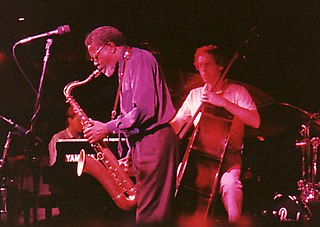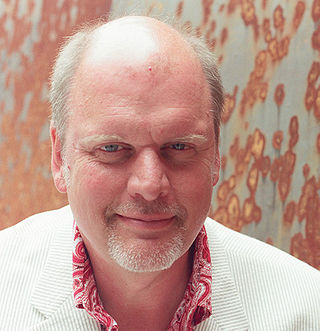Larry Teal (26 March 1905 - 11 July 1984) is considered by many to be the father of American orchestral saxophone.
Larry Teal (26 March 1905 - 11 July 1984) is considered by many to be the father of American orchestral saxophone.

Laurence Lyon Teal earned a bachelor's degree in pre-dentistry from the University of Michigan. Although he came to the University of Michigan to study dentistry, he soon became involved with Wilson's Wolverines—a jazz band with a more than local following. He toured Europe with them for several years and later returned to the States only to be recruited by Glen Gray's Casa Loma Orchestra of Detroit, one of the important society orchestras of the period. He later earned a Doctor of Music from the Detroit Institute of Musical Arts in 1943.
Teal carved out his own niche in Detroit's musical life. He was a member of radio station WJR's live studio orchestra and he was a member of the Detroit Symphony Orchestra (DSO) from 1943 to 1964. Not only did he play sax, as one might expect, but he also performed on clarinet and was the DSO's first desk flutist, a rare enough feat then and almost unheard of now. Additionally, he opened his own music studio and staffed it with players from the orchestra. It was one of the most reputable, demanding and prestigious of its kind in the country. His studio near Wayne University where many high school and collegiate students studied saxophone. Don Sinta was one of those students who was considered a virtuoso in saxophone by many while he was a music major at Wayne. Mr. Teal was highly sought after as a professional musician by both classical and popular musical organizations.
He became the first full-time professor of saxophone at any American university when he was appointed to the faculty of the University of Michigan-Ann Arbor in 1953. He remained the professor of saxophone there until he retired in 1974, at which time he was given the title "professor emeritus."
During his 21 years at the university, Teal taught over 100 college saxophone students, many of whom went on to become successful teachers and performers. In this way he had an unusual degree of influence over the direction and quality of classical saxophone teaching in America.
His students included:
Teal wrote several books for use by saxophone students and teachers, including:

William Elden Bolcom is an American composer and pianist. He has received the Pulitzer Prize, the National Medal of Arts, a Grammy Award, the Detroit Music Award and was named 2007 Composer of the Year by Musical America. He taught composition at the University of Michigan from 1973 until 2008. He is married to mezzo-soprano Joan Morris.

Joe Henderson was an American jazz tenor saxophonist. In a career spanning more than four decades, Henderson played with many of the leading American players of his day and recorded for several prominent labels, including Blue Note, Milestone, and Verve.

Michael Kevin Daugherty is an American composer, pianist, and teacher. He is influenced by popular culture, Romanticism, and Postmodernism. Daugherty's notable works include his Superman comic book-inspired Metropolis Symphony for Orchestra (1988–93), Dead Elvis for Solo Bassoon and Chamber Ensemble (1993), Jackie O (1997), Niagara Falls for Symphonic Band (1997), UFO for Solo Percussion and Orchestra (1999) and for Symphonic Band (2000), Bells for Stokowski from Philadelphia Stories for Orchestra (2001) and for Symphonic Band (2002), Fire and Blood for Solo Violin and Orchestra (2003) inspired by Diego Rivera and Frida Kahlo, Time Machine for Three Conductors and Orchestra (2003), Ghost Ranch for Orchestra (2005), Deus ex Machina for Piano and Orchestra (2007), Labyrinth of Love for Soprano and Chamber Winds (2012), American Gothic for Orchestra (2013), and Tales of Hemingway for Cello and Orchestra (2015). Daugherty has been described by The Times (London) as "a master icon maker" with a "maverick imagination, fearless structural sense and meticulous ear."
Frederick L. Hemke, DMA(néFred LeRoy Hemke Jr.; July 11, 1935 – April 17, 2019) was an American virtuoso classical saxophonist and influential professor of saxophone at Northwestern University. Hemke helped to increase the popularity of classical saxophone, particularly among leading American composers. He controbuted to raise the recognition of the classical saxophone in solo, chamber, and major orchestral repertoire throughout the world. For half a century, from 1962 to 2012, Hemke was a full-time faculty music educator at Northwestern University's Bienen School of Music. In 2002, Hemke was named Associate Dean Emeritus of the School of Music. Hemke retired from Northwestern University in 2012. From the start of his career in the early 1960s, building on the achievements of earlier influential American teachers of classical saxophone — including those of Larry Teal, Joseph Allard, Cecil Leeson, Sigurd Raschèr, and Vincent Abato — Hemke helped build American saxophone repertoire through composers that included Muczynski, Creston, Stein, Heiden, and Karlins. Journalist and author Michael Segell, in his 2005 book, The Devil's Horn, called Hemke "The Dean of Saxophone Education in America." Hemke died on April 17, 2019.
Donald J. Sinta is an American classical saxophonist, educator, and administrator. Mr. Sinta earned a Master of Music degree in saxophone performance from the University of Michigan in 1962.
John Sampen is an American classical saxophonist.
Laurence Wyman is an American classical saxophone teacher who served many years as the professor of saxophone at the State University of New York at Fredonia in Fredonia, New York.
Phillip Wayne Barham is a classical and jazz saxophonist was the professor of saxophone at Tennessee Technological University in Cookeville, Tennessee until October 2018.

Ben Miller is an American rock and avant garde guitarist born and raised in Ann Arbor, Michigan, and now based in the NYC-metro area. He has formerly been a member of such Detroit/Ann Arbor bands as Sproton Layer, Destroy All Monsters, and non-fiction. Destroy All Monsters, in particular, still a cult favorite, was a big part of the proto-punk, punk, and post-punk Detroit rock scene, featuring such bands as the MC5, the Stooges, Sonic's Rendezvous Band, and The Up.
Lynn Klock is an American classical saxophonist and educator. He is Principal Saxophone of the Springfield Symphony Orchestra in Springfield, Massachusetts.
Joseph Edgar Maddy was a pioneering American music educator and conductor.
Frederick A. Fox was an American composer and former music educator specializing in contemporary classical music.

Saxophone technique refers to the physical means of playing the saxophone. It includes how to hold the instrument, how the embouchure is formed and the airstream produced, tone production, hands and fingering positions, and a number of other aspects. Instrumental technique and corresponding pedagogy is a topic of much interest to musicians and teachers and therefore has been subjected to personal opinions and differences in approach. Over the course of the saxophone's performance history, notable saxophonists have contributed much to the literature on saxophone technique.
Charles Rochester Young (1965) is an American composer, music educator, conductor and saxophonist.
Timothy M. Ries is an American saxophonist, composer, arranger, band leader, and music educator at the collegiate/conservatory level. Ries is in his sixteenth year as a professor of jazz studies at the University of Toronto. His universe of work as composer, arranger, and instrumentalist ranges from rock to jazz to classical to experimental to ethno to fusions of respective genres thereof. His notable works with wide popularity include The Rolling Stones Project, a culmination of jazz arrangements of music by the Stones produced on two albums, the first in 2005 and the second in 2008.
Joe Daley was an American jazz tenor saxophonist, composer, and music teacher. Daley was part of the Chicago jazz scene for 40 years. Musicians who studied with Daley include Grammy winners David Sanborn and Paul Winter, Emmy winner James DiPasquale, Richard Corpolongo, Chuck Domanico, and John Klemmer.

The University of Michigan Detroit Center is a community outreach center, meeting/events facility, and academic home base for University of Michigan units, located in Midtown Detroit.
Timothy McAllister is an American classical saxophonist and music educator, who, as of 2014, is Professor of Saxophone at the University of Michigan School of Music, Theatre & Dance.
Alberto (Albert) Luconi was an Italian-American clarinetist and instructor.
Tyler Rand is an American arts executive and the current executive director of the Ann Arbor Symphony Orchestra.